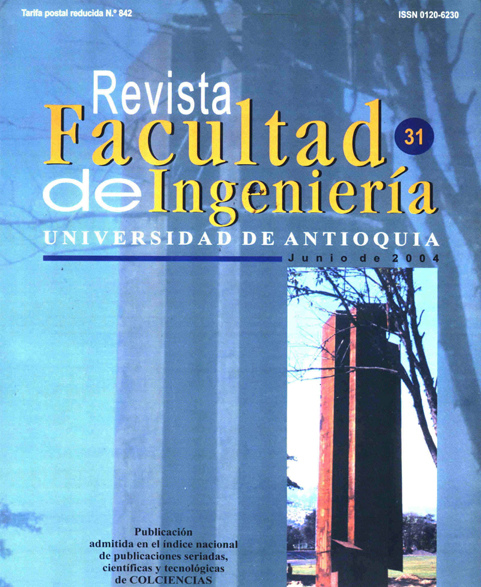Ahorro de energía eléctrica por implementación de filtros desecantes en sistemas de acondicionamiento de aire por compresión de vapor
DOI:
https://doi.org/10.17533/udea.redin.344501Palabras clave:
Gel de sílice, filtro desecante, aire acondicionado, ahorro energéticoResumen
Una serie de experimentos exploratorios han sido llevados a cabo para determinar cómo se afecta el desempeño energético de un sistema de aire acondicionado por compresión de vapor al trabajar con un filtro deshumidificador instalado en la línea de retorno del aire hacia el evaporador. Los experimentos se realizaron considerando sistemas con alta y baja carga latente, y se observo cómo variaba el consumo de energía del equipo. Se encontró que al estar sometido el sistema de aire acondicionado a altas cargas latentes, el ahorro de energía al instalar estos filtros desecantes puede llegar a 14,5% mientras que al estar sometido el sistema a bajas cargas latentes, el ahorro sólo llega a 2%.
Descargas
Citas
Howell, Ronald, et al. “Simulation of refrigerated display cases performance in supermarkets”. En: Proceedings of the IASTED International Conference. Banff, Canada. 1997.pp. 173 -176.
Howell, Ronald, et al. “Effects of indoor relative humidity on refrigerated display cases performance”. En: Proceedings of CLIMA 2000 Conference. Brussels, Belgium. 1997.
Bula, Antonio y Márquez, Antonio. “Modelación matemática y simulación de un sistema de acondicionamiento de aire en estado transitorio”. En: Revista Ingeniería y Desarrollo. N.° 11. 2002. pp. 83-100.
Bula, Antonio, et al. “Thermodynamic simulation of a solar absorption refrigeration system, generator heat exchanger”. En: Conferencia Internacional en modelado, simulación y redes neuronales MSNN - 2000. Universidad de los Andes. Mérida, Venezuela.
Descargas
Publicado
Cómo citar
Número
Sección
Licencia
Los artículos disponibles en la Revista Facultad de Ingeniería, Universidad de Antioquia están bajo la licencia Creative Commons Attribution BY-NC-SA 4.0.
Eres libre de:
Compartir — copiar y redistribuir el material en cualquier medio o formato
Adaptar : remezclar, transformar y construir sobre el material.
Bajo los siguientes términos:
Reconocimiento : debe otorgar el crédito correspondiente , proporcionar un enlace a la licencia e indicar si se realizaron cambios . Puede hacerlo de cualquier manera razonable, pero no de ninguna manera que sugiera que el licenciante lo respalda a usted o su uso.
No comercial : no puede utilizar el material con fines comerciales .
Compartir igual : si remezcla, transforma o construye a partir del material, debe distribuir sus contribuciones bajo la misma licencia que el original.
El material publicado por la revista puede ser distribuido, copiado y exhibido por terceros si se dan los respectivos créditos a la revista, sin ningún costo. No se puede obtener ningún beneficio comercial y las obras derivadas tienen que estar bajo los mismos términos de licencia que el trabajo original.










 Twitter
Twitter